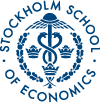No 614: Correlation Between Intensity and Recovery in Credit Risk Models
Raquel M. Gaspar () and Irina Slinko ()
Additional contact information
Raquel M. Gaspar: Dept. of Finance, Stockholm School of Economics, Postal: Stockholm School of Economics, P.O. Box 6501, SE-113 83 Stockholm, Sweden
Irina Slinko: Dept. of Finance, Stockholm School of Economics, Postal: Stockholm School of Economics, P.O. Box 6501, SE-113 83 Stockholm, Sweden
Abstract: We start by presenting a reduced-form multiple default type of model and derive abstract results on the influence of a state variable X on credit spreads, when both the intensity and the loss quota distribution are driven by X. The aim is to apply the results to a concrete real life situation, namely, to the influence of macroeconomic risks on credit spreads term structures. There has been increasing support in the empirical literature that both the probability of default (PD) and the loss given default (LGD) are correlated and driven by macroeconomic variables. Paradoxically, there has been very little effort from the theoretical literature to develop credit risk models that would include this possibility. A possible justification has to do with the increase in complexity this leads to, even for the "treatable" default intensity models. The goal of this paper is to develop the theoretical framework needed to handle this situation and, through numerical simulation, understand the impact on credit risk term structures of the macroeconomic risks. In the proposed model the state of the economy is modeled trough the dynamics of a market index, that enters directly on the functional form of both the intensity of default and the distribution of the loss quota given default. Given this setup, we are able to make periods of economic depression, periods of higher default intensity as well as periods where low recovery is more likely, producing a business cycle effect. Furthermore, we allow for the possibility of an index volatility that depends negatively on the index level and show that, when we include this realistic feature, the impacts on the credit spread term structure are emphasized.
Keywords: Credit risk; sistematic risk; intensity models; recovery; credit spreads
44 pages, November 22, 2005
Full text files
hastef0614.pdfFull text
Questions (including download problems) about the papers in this series should be directed to Helena Lundin ()
Report other problems with accessing this service to Sune Karlsson ().
This page generated on 2024-03-10 04:36:06.

